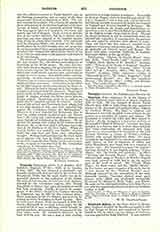

Tavistock Abbey, on the Tavy River in Devon-shire, England, founded for Benedictine monks in 961 by Earl Ordgar of Devon, and completed by his son Ordulf in 981, in which year the charter of confirmation was granted by King Ethelred. It was endowed with lands in Devon, Dorset, and Cornwall, and became one of the richest monasteries in the west of England. The church, dedicated to Our Lady and St. Rumon (one of the early Irish saints in Cornwall), was burned by the Danes in 997, but magnificently rebuilt under Livingus, the second abbot. He and his successor Aldred both became bishops of Worcester, and the latter is said to have crowned William the Conqueror. The thirty-sixth abbot, John Dynynton, was granted leave in 1458 to use the mitre and other pontificalia; and the thirty-ninth, Richard Banham, was made a lord of Parliament by Henry VIII in 1513. Twenty-five years later the last abbot, John Peryn, with twenty monks, surrendered the monastery to the king, receiving a pension of a hundred pounds. The abbey revenues at the dissolution were estimated at £902. The monastic buildings, with the borough of Tavistock, were granted to John Lord Russell, whose descendant, the Duke of Bedford, still owns them. Nothing is left of the monastery except the refectory, two gateways, and a porch; the splendid abbey church has entirely disappeared.
D. O. HUNTER-BLAIR.

